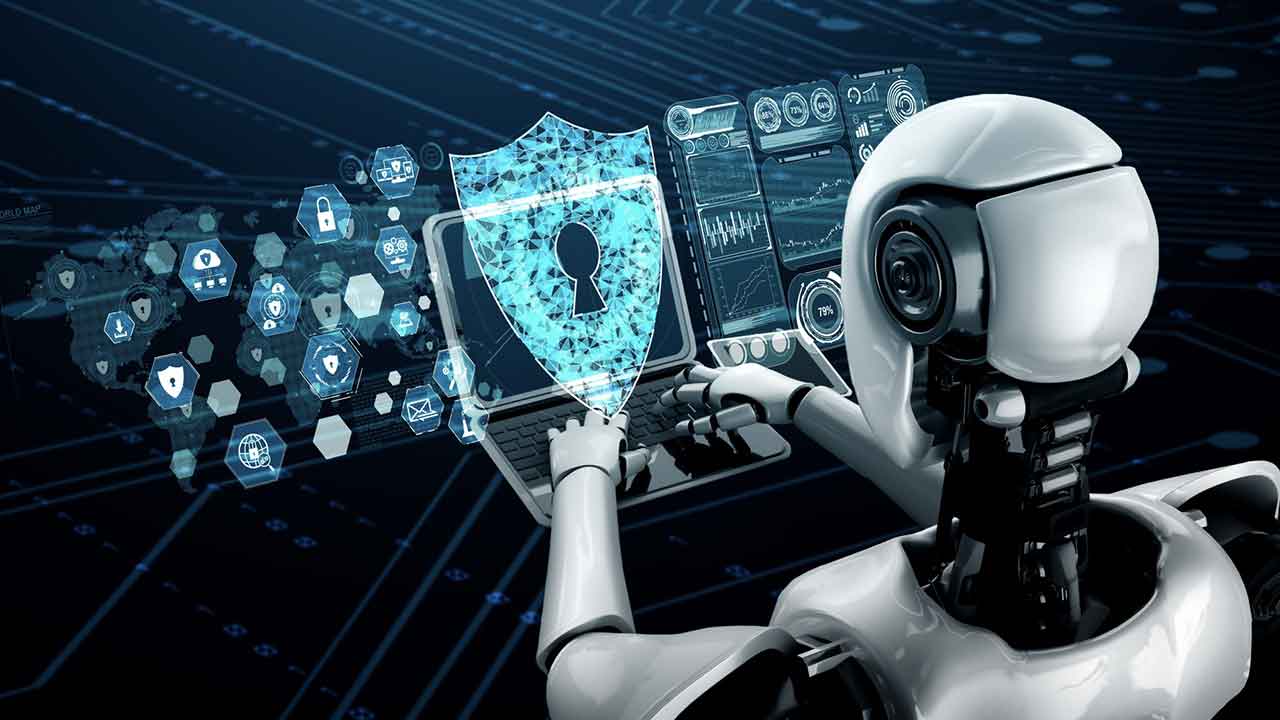Quote for the day:
"Leadership has a harder job to do than just choose sides. It must bring sides together." -- Jesse Jackson
Can AI Fix Digital Banking Service Woes?

For banks in India, an AI-driven system for handling customer complaints can be
a game changer by enhancing operational efficiency, boosting customer trust and
ensuring strict regulatory compliance. The success of this system hinges on
addressing data security, integrating with legacy systems, and multi-lingual
challenges while fostering a culture of continuous improvement. "By following
this detailed road map, banks can build a resilient AI system that not only
improves customer service but also supports broader financial risk management
and compliance objectives, said Abhay Johorey, managing director, Protiviti
Member Firm for India. An AI chatbot could drive operational efficiency, perform
enhanced data analytics and risk management, increase customer trust and have
compliance benefits if designed well. A badly executed one could run the risk of
providing inaccurate financial information to customers or infringe on their
privacy and data. ... "We are entering a transformative era where AI can
significantly improve the speed, accuracy and fairness of complaint resolution.
AI can categorize complaints based on urgency, complexity or subject matter,
ensuring faster escalation to the appropriate teams. AI optimizes complaint
routing and assists in decision-making, reducing processing times," the RBI
said.
Ethernet roadmap: AI drives high-speed, efficient Ethernet networks

The Ethernet Alliance’s 10th anniversary roadmap references the consortium’s
2024 Technology Exploration Forum (TEF), which highlighted the critical need for
collaboration across the Ethernet ecosystem: “Industry experts emphasized the
importance of uniting different sectors to tackle the engineering challenges
posed by the rapid advancement of AI. This collective effort is ensuring that
Ethernet will continue to evolve to provide the network functionality required
for next-generation AI networks.” Some of those engineering challenges include
congestion management, latency, power consumption, signaling, and the
ever-increasing speed of the network. ... “One of the outcomes of [the TEF]
event was the realization the development of 400Gb/sec signaling would be an
industry-wide problem. It wasn’t solely an application, network, component, or
interconnect problem,” stated D’Ambrosia, who is a distinguished engineer with
the Datacom Standards Research team at Futurewei Technologies, a U.S. subsidiary
of Huawei, and the chair of the IEEE P802.3dj 200Gb/sec, 400Gb/sec, 800Gb/sec
and 1.6Tb/sec Task Force. “Overcoming the challenges to support 400 Gb/s
signaling will likely require all the tools available for each of the various
layers and components.”
Dealing With Data Overload: How to Take Control of Your Security Analytics

Organizations face several challenges when it comes to security analytics. They
need to find a better way to optimize high volumes of data, ensure they are
getting maximum bang for the buck, and bring balance between cost and
visibility. This allows more of the "right" or optimized data to be brought in
for advanced analytics, filtering out the noise or useless data that isn't
needed for analytics/machine learning. ... If you're a SOC manager, and your
team is triaging alerts all day, perhaps you've got one full-time staffer who
does nothing but look at Microsoft O365 alerts, and another person who just
looks at Proofpoint alerts. The goal is to think about the bigger operational
picture. When searching for a solution, it's easy to focus only on your
immediate challenges and overlook future ones. As a result, you invest in a fix
that solves today's problems but leaves you unprepared for the next ones that
arise. You've shot yourself in the foot. ... Organizations tend to buy different
tools to solve different problems, when what they need is a data analytics
platform that can apply analytics, machine learning, and data science to their
data sets. That will provide the intelligence to make business decisions,
whether that's to reduce risk or something else. Look for a tool, regardless of
what it's called, that can solve the most problems for the least amount of
money.
Cyber insurance isn’t always what it seems

Still, insurance is no silver bullet. Policies often come with limitations, high
premiums, and strict requirements around security posture. “Insurers scrutinize
security postures, enforce stringent requirements, and may deny claims if proper
controls are not in place,” he said. Many policies also include exclusions and
coverage gaps that add complexity to the decision. When used appropriately,
cyber insurance plays a supporting role, not a leading one. “They should
complement the defensive capabilities that focus on avoiding and minimizing
loss,” Rosenquist said, serving as a safety net rather than a frontline defense.
“Cyber insurance can provide important financial relief, but it should never be
the first or only line of defense.” ... “Many businesses still believe they’re
too small to be targeted, that cyber insurance is only for large companies, or
that it’s too expensive. However, the reality is that over 60% of small
businesses have been victims of cyberattacks, privacy breaches affect
organizations of all sizes, and the cyber insurance market offers competitive,
tailored options. Working with a skilled broker brings real value. They offer
broad expertise and help build tailored solutions. With the proper guidance,
organizations can create programs that address their specific risks and needs,“
explained
Tijana Dusper,
a licensed broker for insurance and reinsurance at InterOmnia.
RFID Hacking: Exploring Vulnerabilities, Testing Methods, and Protection Strategies
When an RFID reader scans an object, it emits a radio frequency (RF) signal that
interacts with nearby RFID tags, potentially up to 1.14 million tags in a single
area. The antenna on each tag absorbs this energy, powering the embedded
microchip. The chip then encodes its stored data into a binary format (0s and
1s) and transmits it back to the RFID reader using reverse signal modulation.
The collected data is then stored and processed, either for human interpretation
or automated system operations. ... As with many wireless technologies, RFID
technology adheres to certain standards and communication protocols. ... As RFID
technology becomes increasingly embedded in everyday operations, from access
control and inventory tracking to cashless payments, the risks associated with
RFID hacking cannot be ignored. The same features that make RFID efficient and
convenient, wireless communication and automatic identification, also make it
vulnerable to cyber threats. RFID hacking techniques, such as cloning, skimming,
eavesdropping, and relay attacks, allow cybercriminals to intercept sensitive
information, manipulate access controls, or even exploit entire systems. Without
proper security measures, businesses and individuals risk unauthorized data
breaches, financial fraud, and identity theft.
How Organizational Rewiring Can Capture Value from Your AI Strategy
McKinsey’s research indicates that while AI use is accelerating dramatically
(78% of organizations now use AI in at least one function, up from 55% a year
ago), most organizations are still in early implementation stages. Only 1% of
company executives describe their generative AI rollouts as "mature." For retail
banking leaders, this reality check suggests both opportunity and urgency. The
potential for competitive advantage remains substantial for early transformation
leaders, but the window for gaining this advantage is narrowing as adoption
accelerates. As McKinsey senior partner Alex Singla observes: "The organizations
that are building a genuine and lasting competitive advantage from their AI
efforts are the ones that are thinking in terms of wholesale transformative
change that stands to alter their business models, cost structures, and revenue
streams — rather than proceeding incrementally." For retail banking executives,
this means embracing AI as a strategic imperative that requires rethinking
fundamental business models, not merely implementing new technology tools. The
most successful banking institutions will be those that undertake comprehensive
organizational rewiring, driven by active C-suite leadership, clear strategic
roadmaps, and a willingness to fundamentally redesign how they operate.
Securing AI at the Edge: Why Trusted Model Updates Are the Next Big Challenge

Edge AI is no longer experimental. It is running live in environments where
failure is not an option. Environmental monitoring systems track air quality in
realtime across urban areas. Predictive maintenance tools keep industrial
equipment running smoothly. Smart traffic networks optimize vehicle flow in
congested cities. Autonomous vehicles assist drivers with advanced safety
features. Factory automation systems use AI to detect product defects on
high-speed production lines. In all these scenarios, AI models must continuously
evolve to meet changing demands. But every update carries risks, whether through
technical failure, security breaches, or operational disruption. ... These
challenges cannot be solved with isolated patches or last-minute fixes. Securing
AI updates at the edge requires a fundamental rethink of the entire lifecycle.
The update process from cloud-to-edge must be secure from start to finish.
Models need protection from the moment they leave development until they are
safely deployed. Authenticity must be guaranteed so that no malicious code can
slip in. Access control must ensure that only authorized systems handle updates.
And because no system is immune to failure, updates need built-in recovery
mechanisms that minimize disruption.
Beyond the Black Box: Rethinking Data Centers for Sustainable Growth

To thrive under the growing pressure, the data center sector must rethink its
relationship with the communities it enters. Instead of treating public
engagement as an afterthought, what if the planning process started with people?
Now, reimagine the development timeline. What if the public-facing engagement
was prioritized from the very start? Imagine a data center operator purchasing a
parcel of land for a new data center campus near a mid-sized city. Instead of
presenting a fully formed plan months later, the client begins the conversation
by asking the community: “How can we improve things while becoming your
neighbor?” While commercial viability is essential, early engagement and
collaboration can deliver positive outcomes without substantially increasing
costs. ... For data centers in urban environments where space is
limited, the listen-first ethos still holds value. In these cases, the focus
might shift to educational initiatives, such as training programs or
partnerships with local schools and universities. Early public engagement
ensures that urban projects align with the needs and priorities of residents
while addressing their concerns. This inclusive approach benefits all
stakeholders: for local authorities, it supports broader sustainability and net
zero goals, and for communities, it delivers tangible benefits that clarify the
data centre’s impact and value to the area.
Generative AI In Business: Managing Risks in The Race for Innovation

The issue is that businesses lack the appropriate processes, guidelines, or
formal governance structures needed to regulate AI use, which, at the end of the
day, makes them prone to accidental security breaches. In many instances, the
culprits are employees who introduce GenAI systems on corporate devices with no
understanding of the risks that come with it or their use even permitted based
on the company’s existing data security and privacy guidelines. ... Never
overestimate the power of employee education, which is essential in times when
new innovations are far ahead of education. Put in place an educational program
that delves into the risks of AI systems. Include training sessions that give
people the tools they need to recognize red flags, such as suspicious
AI-generated outputs or unusual system behaviors. In a world of AI-enabled
threats, it’s important to empower employees to act as the first line of defense
is essential. ... A preemptive approach that leverages tools such as Automated
Moving Target Defense (AMTD) can help organizations stay ahead of attackers. By
anticipating potential threats and implementing measures to address them before
they occur, companies can reduce their vulnerability to AI-enabled exploits.
This proactive stance is particularly important given the speed and adaptability
of modern cyber threats.
How to Get a Delayed IT Project Back on Track

The best way to launch a project revival is to look backward. "Conduct a
thorough project reassessment to identify the root causes of delays, then
re-prioritize deliverables using a phased, agile-based approach," suggests Karan
Kumar Ratra, an engineering leader at Walmart specializing in e-commerce
technology, leadership, and innovation. "Start with high-impact, manageable
milestones to restore momentum and stakeholder confidence," he advises in an
online interview. "Clear communication, accountability, and aligning leadership
with revised goals are critical." ... Recall past team members, yet supplement
them with new members with similar skills and project experience, recommends
Pundalika Shenoy, automation and modernization project manager at business
consulting firm Smartbridge, via email. "Outside perspectives and expertise will
help the team." While new team members should be welcomed, try to retain at
least some past contributors to ensure project continuity, Rahming advises.
Fresh ideas and insights may be what the legacy project needs to succeed but try
to retain at least some past contributors to ensure project continuity, Rahming
advises. "The new team members may well bring a sense of urgency, enthusiasm and
skills ... that weren't present in the previous team at the time of the delay."
No comments:
Post a Comment